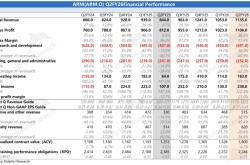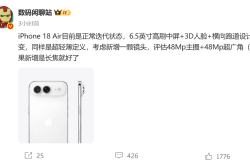Robot Boom Makes a Comeback: Concept Stocks Soar, and the Trillion-Dollar Track Embraces the 'Mass Production元年' (First Year of Mass Production)
![]() 09/05 2025
09/05 2025
![]() 487
487
On September 3rd, the capital market was once again abuzz with excitement over robots, as robot concept stocks on the Hong Kong Stock Exchange experienced a collective surge. MicroPort Robotics opened nearly 11% higher, Shoucheng Holdings soared by over 15% at its peak, and UBTECH secured a strategic investment of $1 billion. An industrial revolution, led by humanoid robots, is accelerating its arrival.
Commercialization Accelerates: Robot Industry Enters a New Phase of 'Self-Sufficiency'
The year 2025 has been dubbed by the industry as the 'first year of mass production' for humanoid robots. According to Daiwa Securities' research report, China's humanoid robot deliveries this year are set to exceed previous expectations. The brokerage firm predicts that by the end of this year, deliveries will approach 7,000 units, primarily driven by companies such as Unitree, Agibot, X-Humanoid, and UB Tech.
Daiwa forecasts that over the next five years, China will emerge as the primary market for humanoid robots, with an estimated 400,000 units expected to be delivered by 2030, of which China will account for approximately 70%.
Behind this robot investment frenzy lies a pivotal turning point where the industry is transitioning from 'technological exploration' to 'commercialization.' Several robot companies reported impressive financial results in the first half of 2025, with major Hong Kong-listed robot manufacturers achieving double-digit year-on-year revenue growth rates.
Among them, MicroPort Robotics led the industry with a 77% revenue growth rate in the first half of the year, primarily fueled by the rapid commercialization of multiple products and outstanding performance in overseas markets.
UBTECH reported revenue of RMB 621 million in the first half of the year, marking a 27.5% year-on-year increase, with a narrowing loss of 18.5% during the period. According to the company, it anticipates delivering over 500 industrial humanoid robots in 2025, with an annual production capacity exceeding 1,000 humanoid robots.
Shoucheng Holdings reported revenue of HK$731 million in the first half of this year, a 36% year-on-year increase; net profit attributable to shareholders of HK$339 million, a 30% year-on-year increase; and gross profit of HK$295 million, a 26% year-on-year increase. Moreover, as one of the earliest listed companies in China to systematically deploy in the robot industry, Shoucheng Holdings is accelerating its transformation from a mere investor to a full-chain service provider.
Furthermore, Zhiyuan Robotics and Unitree Technology recently secured a RMB 120 million humanoid robot procurement order from a subsidiary of China Mobile, while UBTECH also won a RMB 90.5115 million robot equipment procurement project in July this year.
These orders carry symbolic significance, indicating that large state-owned enterprises and specific industries have begun to invest in humanoid robot solutions, significantly boosting the confidence of the capital market and industry in the sector's prospects.
As production scales up gradually and expense ratios continue to decline, major robot companies are accelerating their approach towards the breakeven point.
In the first half of this year, except for Horizon Robotics, which still incurred significant losses with an expanded loss margin, the other four companies all experienced varying degrees of loss reduction.
Among them, Geek+ reported a loss of approximately RMB 48 million (in RMB, same below) during the period, a substantial year-on-year decrease of 91.3%, with its adjusted EBITDA turning positive at RMB 11.621 million; Dobot narrowed its loss by over 30% in the first half of the year, gradually approaching the breakeven point.
This trend is a positive and crucial signal for China's robot industry, profoundly reflecting the sector's transition from 'burning money on R&D' to a healthy development stage of 'self-sufficiency,' with the effectiveness of business models initially validated.
Technological Breakthroughs and Challenges: Has the 'ChatGPT Moment' for Robots Arrived?
Despite the accelerated commercialization, the robot industry still faces core technological challenges. Huatai Securities pointed out in its latest research report that the current bottlenecks for humanoid robots lie in hardware cost reduction and non-standardization, as well as the intelligence of the 'brain.'
At the software level, the 'ChatGPT moment' for robot brains has yet to materialize. Robots not only require empowerment from large language models but also need embodied intelligent carriers with autonomous mobility or action capabilities.
However, Tesla's release of the fourth version of its 'Master Plan' still injected a strong dose of confidence into the industry. Elon Musk emphasized the potential of the Optimus humanoid robot and stated that approximately 80% of Tesla's corporate value would hinge on the development of this robot project in the future. According to Tesla's plan, the robot is expected to be commercially applied in early 2026.
Meanwhile, internationally renowned investment firm InfiniCapital officially signed a $1 billion strategic partnership agreement with UBTECH and will engage in in-depth cooperation in various areas, including the upstream and downstream industrial chains of humanoid robots, the construction of a Middle Eastern mega-factory, and R&D centers.
At the same time, InfiniCapital also plans to increase its stake in UBTECH at an appropriate time, becoming a significant shareholder with no more than a 5% stake.
In response, the capital market also reacted positively. Citi published a research report expressing encouragement over UBTECH's first-half performance, raising its humanoid robot delivery guidance for this year from 300-500 units to over 500 units and forecasting 2,000-3,000 deliveries next year.
In the long run, to maintain technological leadership, major robot companies continue to increase their R&D investments. Horizon Robotics saw its R&D expenditure surge by 62% year-on-year to RMB 2.3 billion in the first half of this year; Geek+ focused on strengthening its R&D investment in embodied intelligence, achieving flexible robot scheduling through software algorithm layers via AI+robotics technology.
With Tesla's Optimus expected to be commercially applied in early 2026 and Chinese manufacturers expanding in overseas markets such as the Middle East, humanoid robots are transitioning from concepts to reality.
Huatai Securities also pointed out that future attention should be focused on the intelligent emergence of the robot brain's 'Scaling Law,' which will truly drive the positive flywheel effect for humanoid robots.
Currently, the capital frenzy surrounding the humanoid robot sector is not unfounded but is grounded in solid commercialization progress and technological breakthroughs.
From the revenue growth and loss reduction of Hong Kong-listed robot companies in the first half of the year to the significant orders and strategic investments secured by leading companies such as Tesla and UBTECH, all evidence points to the industry's crucial transition from 'concept hype' to 'mass production and commercialization.'
However, the true explosion still awaits the arrival of the robot brain's 'ChatGPT moment'—only when software and hardware collaboration achieves cost reduction and intelligent leapfrogging can humanoid robots truly unleash a trillion-dollar industrialization wave.








